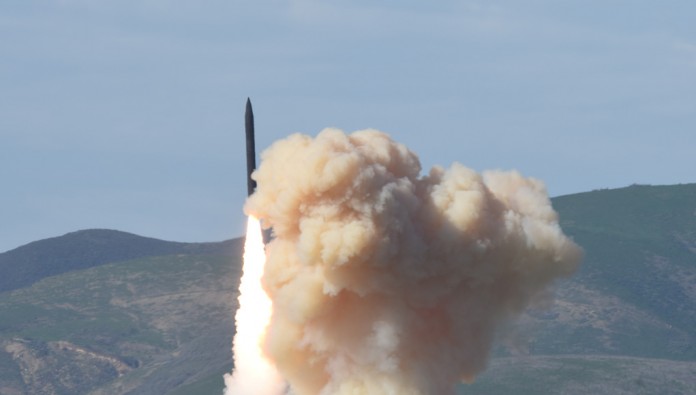
New thrusters system designed for the Exoatmospheric Kill Vehicle (EKV) of the Ground Based Interceptor (GBI) missile have passed an important validation test yesterday. The planned test that was originally scheduled for late 2015 did not include a target intercept. The test evaluated the CE-II EKV that demonstrated the performance of alternate divert thrusters in a flight environment. It also performed end-to-end discrimination of a complex target scene through the GMD fire control loop. The next flight test will conduct full intercept of a target simulating an Inter-Continental Ballistic Missile (ICMB).
The interceptor and its kill vehicle are part of the Ground-based Midcourse Defense (GMD), the land-based element of the US Ballistic Missile Defense System (BMDS) supposed to protect the continental USA from a limited number of intermediate- and long ballistic missile attacks, including ballistic missiles, such as the missiles North Korea is believed to be developing. Most of these long-range ground-based interceptors are based in Alaska, a small number of interceptors are also based at Vandenberg Air Force Base, Calif., where the This ‘Ground-based Midcourse – Defense Controlled Test Vehicle-02+’ (GM CTV-02+) The mission also involved two forward based radars located in and near Hawaii.
The test successfully evaluated the performance of alternate divert thrusters. During the test, a target representing an intermediate-range ballistic missile was air-launched from a U.S. Air Force C-17 aircraft over the broad ocean area west of Hawaii. An Army Navy/Transportable Radar Surveillance and Control Model 2 (AN/TPY-2) radar in Forward Based Mode, located at the Pacific Missile Range Facility, Kauai, Hawaii, detected the target and relayed target track information to the Command, Control, Battle Management, and Communication system. The Sea-Based X-band radar, positioned in the broad ocean area northeast of Hawaii, also acquired and tracked the target. The GMD system received track data and developed a fire control solution to engage the target. The test also included a demonstration of technology to discriminate countermeasures carried by the target missile.

MDA said that program officials will evaluate system performance based upon telemetry and other data obtained during the test. Engineering data from this test will be used to increase confidence for future GMD intercept missions. MDA is planning another test for the end of this year (FTG-15), which will be the first intercept flight test for the CE-II Block 1 GBI and the first intercept of a target simulating an ICMB. A successful conduct of this test will release the final delivery of 10 CE-II Block 1 GBIs missiles over the next year, to achieve a full complement of 44 GBIs in Alaska and California by the end of 2017.
The test flight was conducted by The U.S. Missile Defense Agency (MDA), in cooperation with the U.S. Air Force 30th Space Wing, the Joint Functional Component Command for Integrated Missile Defense, and U.S. Northern Command.



















